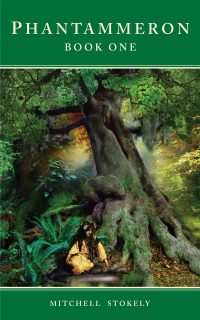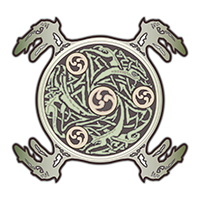One of the hidden motivations for writing the long Phantammeron series had to do with my desire to write a rich “Creation Myth” for the origins of the archetypal place we know as Fairyland.
This idea is not yet revealed in the first novel. But my original idea behind Phantaia and the Phantammeron worlds was the concept of writing a mythological origin-piece for what many in Celtic England and Ireland have for thousands of years described as the Other World of Fay or the Faeries (the Tuatha de Dannan).

The Twilight Forest called Phantaia in later books will form the tragic origin myth for a later world in book four, in which the Children of Shining or Faerie folk (later ancestors of Ana and Ama in book one) come into creation in my books. The original underpinnings for my Phantammeron story was to create a much more expansive multiverse than Tolkien’s Silmarillion, one in which the Noldor (Elves) come into being and whose tragic tale form the background for his epic history.
My idea in 1989, when I started writing the Phantammeron, was to go beyond a Tolkien elvish history and expand out into a much vaster Fairytale myth for the Fay or Fairy people in my own series. But in doing so like Tolkien I wanted to connect my tale loosely with real Celtic story material in England, Ireland, and Western Europe. I wanted to avoid Modern retellings and tap into the spirit of the original Gaelic tales.
And that is why around 1987 I had begun to read so much mythology at the university library as a young man. I wanted to avoid modern fantasy and review the actual stories and histories behind fairytales, removing cliches and protagonist-driven, modern novel construction. In the Phantammeron you will see in later books the twin girls that form the ancient matriarchs of the Faerie people come into being as well as the ancient Manna or animals tied so closely to the fairy world later. But I wanted a very cryptic and primitive yet drama-filled origin myth in book one that closely tied the enchanted waters of the Sacred Pool with both the reason for the Faeries creation later but also that which cursed them.
In later books you will also see how mythic creatures like the giants came into being, their forms and spirits closely conceived from a new world called Anatar formed from the ruins of Phantaia. BTW….the giants also get sucked into the conflicts which engulf the Fay. And there are many other races born along with them. But the Central Idea in my novels is that Phantaia and the One Tree and its mystical well form the central paradise for the Faerie later and their desire to return to Abrea is both a mystical one and a heartfelt desire that later comes into play in the world later connected by mist to Phantaia created in Book One.
The reason for constructing such an elaborate history was very much based on my deep longing to make real all the mysterious fairy worlds I remember in books my mother read to me as a child but also to succor my imagination in desiring to conceive of such a wild place as this Irish Other World, one filled with wonder and great beauty, but also a depth of tragedy that goes way beyond Tolkien’s Elvish conception.
To fulfill that I knew I needed a rich if not difficult creation myth type of series, one which I knew few would read or have the patience to understand, yet which has spiritual and cultural meaning to those of us from Western Culture. But desiring to put down my faerie history was the early purpose for the Phantammeron and remains the same purpose, even now. I’m hoping I get to finish the series so you can truly see where the books are heading, in that regard. There are certainly many new wonders, people, and creatures ahead to show you why Phantaia was created, which was always in pursuit of casting back the eternal mists that still hide Faerie from us.
– the Author



